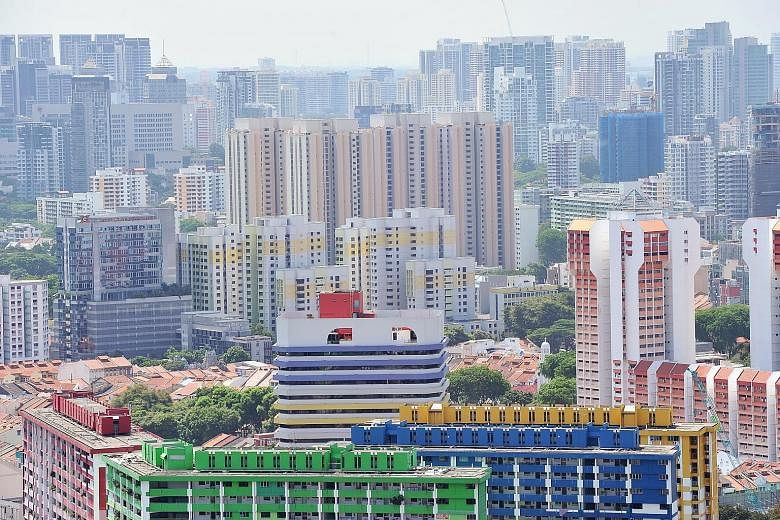Land costs in Singapore remain high but new home prices are falling.
That spells crimped profit margins for developers, just as competition for land impedes their ability to restock at a reasonable cost, according to a new study by BNP Paribas.
This could slow down growth for these developers, said the firm's analyst, Mr Chong Kang Ho. However, the shares of listed developers have largely priced in the upcoming oversupply of private homes, which will help maintain a stable outlook on the sector, he added.
The report analysed about 185 successful Government Land Sale bids from 2007 to last month, and found that developers have become more cautious in their land bids.
Margin buffers this year - the difference between the prevailing price of launches in the vicinity and development costs of that plot - are generally above the mean, Mr Chong said. A wider spread of bids for each site, which indicates differing views among developers, may also be due to rising uncertainty in the global economy, he added.
Still, the number of bids for each site tender is up from an average of seven last year to 9.3 this year, so far, as more developers seek to restock their land banks.
And while winning bids have softened in some areas, developers have gone in to protect pricing in others. They include MCC Land, for Parcels A and D in Tampines Avenue 10, and MCL Land, for Parcels A and B in Jurong West Street 41.
Plum sites also continue to attract more bidders, so a slower decline in land costs could hurt Singapore developers' margins, especially if prices in the primary sales market continue falling, said Mr Chong.
Developers' net margins fell sharply from a recent peak of 35.7 per cent in 2009 to about 11.8 per cent last year, he estimated.
And amid increased competition for sites, established Singapore developers have not been effective in restocking in Singapore, he added.
Using City Developments (CDL) and Frasers Centrepoint as proxies for these developers, he said their success rate of securing land has dropped from 13 per cent to 23 per cent in 2010 to 2012, to 10 per cent in 2013 and last year, to zero so far this year.
They face stiff competition from "new players entering the land market, and eager to expand market share, such as foreign developers, boutique local developers and construction-related companies," said Mr Chong.
In a separate report by Maybank Kim Eng Research released yesterday, analyst Derrick Heng said developer stocks may still rally, even as home prices slide.
This sort of rally has unfolded in 15 of the 31 quarters of home price contraction since the fourth quarter of 1997, the report found. In fact, home sales volume has had a higher correlation with stock prices than home prices, said Mr Heng.
"Hence, while home price changes are often used as an indicator for developer stocks, we argue that home sales volume can be a bigger driver at different parts of the market cycle," he said.
Using CDL as a proxy to developer stock prices, the study found that in the fourth quarter of 2001, its share price jumped 44.7 per cent, even as home prices fell 4.3 per cent - likely due to a 43 per cent surge in home sales volume, and some government off-budget measures to reverse cooling measures then.
"We could see a similar situation next year," said Mr Heng.
"While regulatory overhang continues to weigh on near-term sentiment, we reiterate that Singapore's property market is past the worst of policy intervention, and believe the Government could start to roll back cooling measures next year."
This may not arrest home price declines but should bring a rebound in sales volume, he said.
"With our universe trading at a 48 per cent discount to revalued net asset value (RNAV), and 0.59 times price-to-book value, we continue to see good value, and a skewed risk-reward ratio," he added, maintaining an overweight call on the sector.


